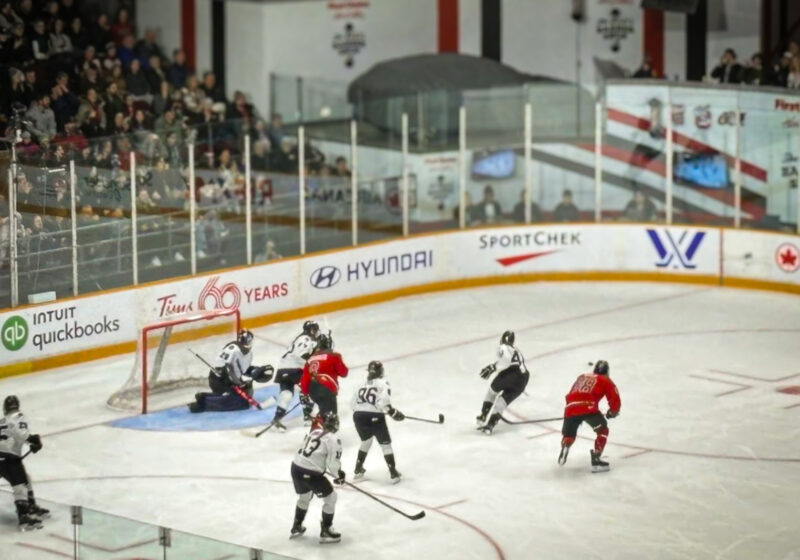I give Christopher Seaman credit. This past weekend, he led the Rochester Philharmonic Orchestra in an all-Mozart program. Risky. Because how do you take something as well-known as Mozart’s Jupiter Symphony and make it new to an audience? Even writing this article, I’m not sure what I can say that will enlighten my readers about a piece that every student at Eastman could sing on a whim – even the clarinetists who are left out!
First, here is some background. The first piece on the program was Mozart’s Serenade No. 12 in C minor for winds. Written in between a serenade for orchestra, Mozart composed this ingenious wind serenade in 1782 for the Emperor Joseph II of Austria and a little wind ensemble that he gathered up. The definition of a Serenade is a light-hearted work, which is an ironic title for something so serious and dark at times. Mozart’s Sinfonia Concertante in E-flat major for Violin, Viola and Orchestra was next on the program. Most likely a product of Mozart’s Salzburg period, this double concerto has no exact date of composition since no surviving manuscripts exist. It was thought that Mozart started to favor the viola during his Salzburg years, and might have had himself in mind when composing. In order to give the solo viola an edge against the viola section, he had the viola tune up a half-tone, which gives it more brightness and clarity.
The program ended with the ever-famous Symphony No. 41 in C major, also known as “Jupiter.” It is not known who named the symphony Jupiter, but was named after the Roman god Jupiter (Jove), who holds the same position as Zeus did for the Greeks. The third symphony he wrote in 1788 was his last, and probably rightfully so. With its jubilance and buffo spirit, even Robert Schumann said of this symphony, “There are things in the world about which nothing can be said, as Mozart’s C major Symphony with the fugue, much of Shakespeare, and pages of Beethoven.”
My seat near the back of the grand balcony was quite a distance for a little octet. The hall’s improved acoustics made the ensemble audible, but it didn’t have the grand quality that it might have had from a closer spot. Even for the orchestral pieces, the smaller “Mozartian” orchestra still didn’t have the “umph” that I was looking for.
Seaman’s choice to do a woodwind octet on a philharmonic program was one of the ways in which he tried to do an original presentation of Mozart’s music. It was a smart choice to feature the wind section, and though I’m surely biased, they are my favorite section of the RPO.
Visually, I found the principal oboe and principal clarinetist to be moving around much more than their second players, making the motions distracting. Had the movements been coordinated, I might not have felt so uneasy about it. From my distance, it sounded muddy and lifeless, but had an outstanding bassoon solo in the final Allegro.
I disagree with the program notes on the Sinfonia concertante. Don Anderson says of the first movement that “[it] is the most ingeniously conceived of the three.” The second movement is pure and beautiful, and is mostly in minor, which Mozart saves for only really special occasions. The contrapuntal nature of the last movement also makes it “ingeniously conceived.”
David Brickman, violin soloist on the Sinfonia concertante, sounded rushed in the first movement. His opening of the second movement was gorgeous and redeemed his first movement. Melissa had a big, full sound on the viola, and really worked her part in as a bass line at appropriate times. Hearing that on Thursday night’s opening performance she was drowned out by the orchestra, she confidently adjusted for the balance problems on Saturday. All cadenzas and phrasings were well matched, the orchestra’s accompanying was meticulous and it was a truly enjoyable selection.
As for presenting old material in a new way, I did not feel that the performance of the Jupiter symphony gave me any new thoughts about the work. Though the playing itself was together, and phrasing and tempos were well planned out, I felt that the ensemble, including the maestro, were all too comfortable with the piece, and gave away the fact that it is a staple of orchestral literature. It sounded fine, but even if the orchestra looked a little more enthusiastic, and if Seaman took his head out of the score a little more – which I doubt he needed, but there’s security in having it there – it would have helped. That’s part of live performance, am I wrong?
The RPO played a convincing concert of Mozart, but left me wanting more. The audience felt otherwise, as they were as pleased as ever with their applause. I hope that the RPO can keep their risky programming and do something spectacular with it in the future.
Reguero can be reached at



